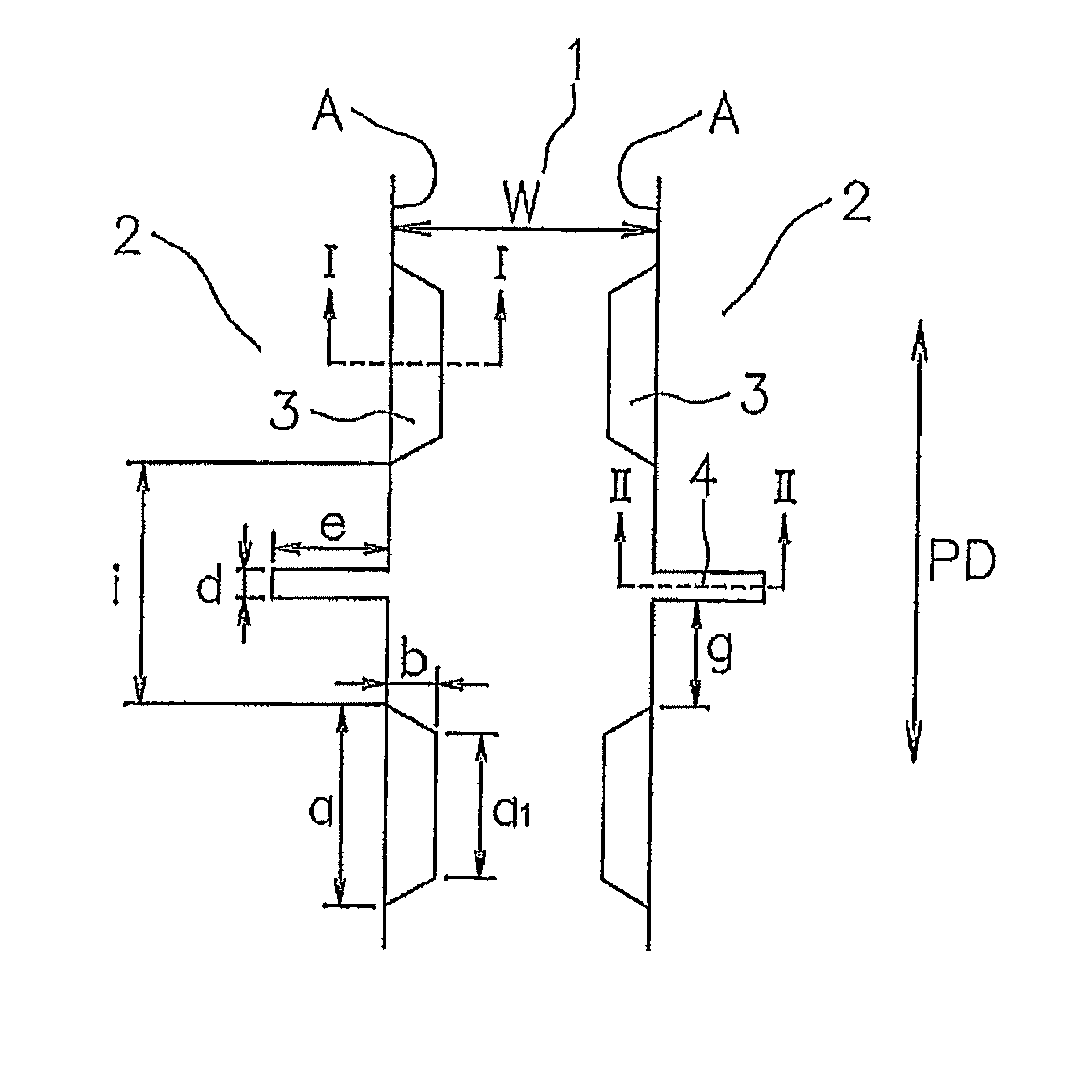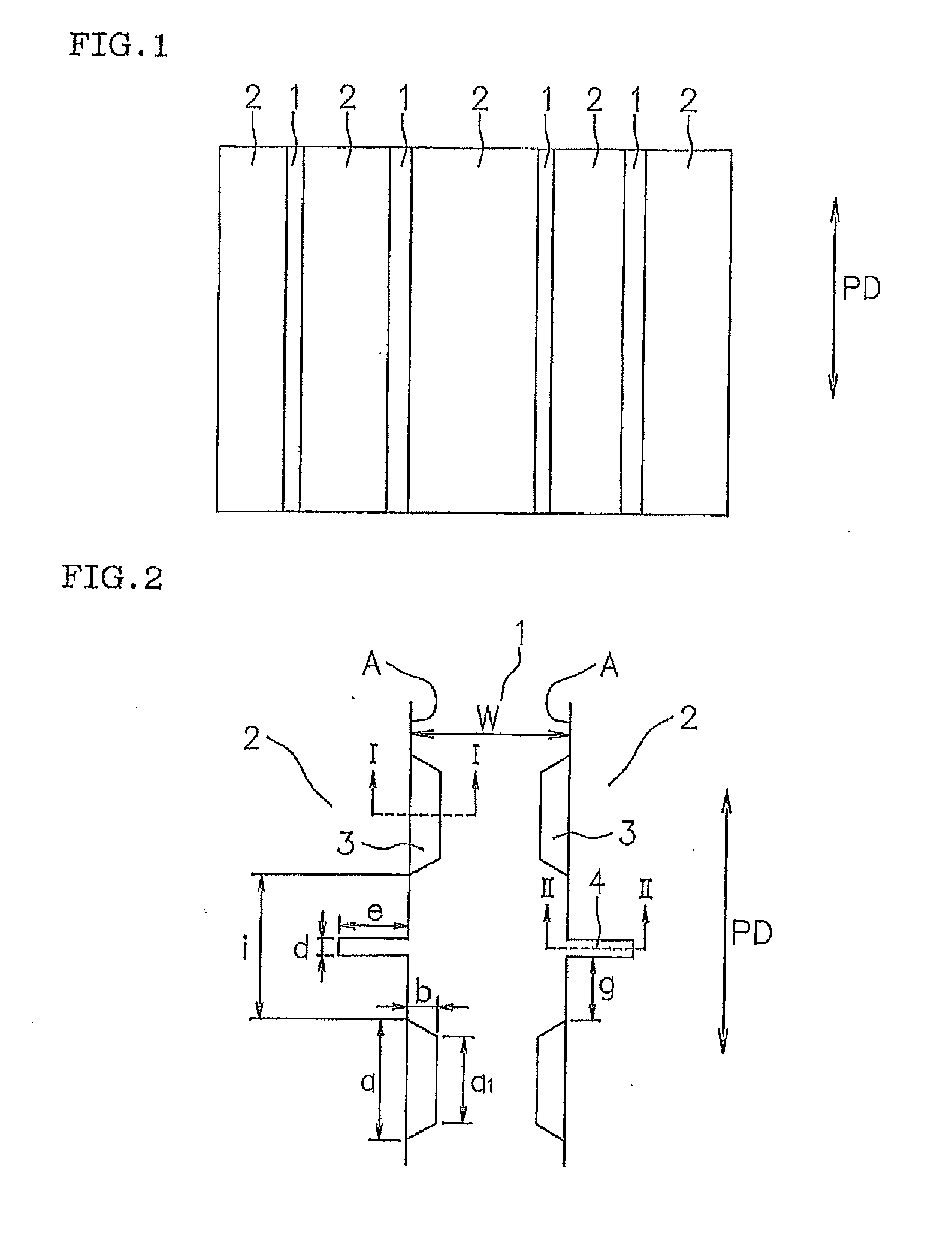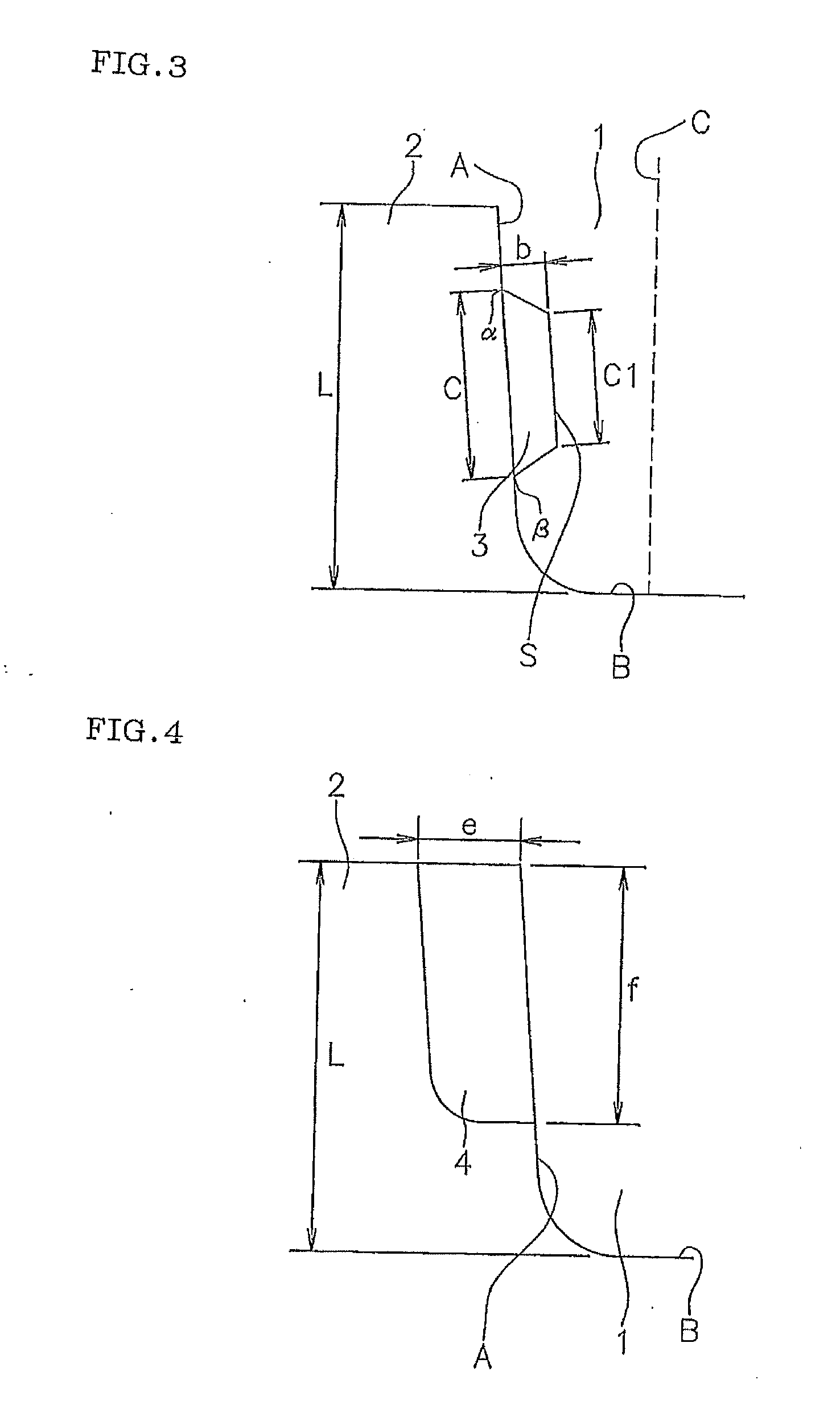Pneumatic tire
a technology of pneumatic tires and grooves, which is applied in the direction of non-skid devices, vehicle components, transportation and packaging, etc., can solve the problems of reducing the width of grooves, cracks (groove cracks), and the durability of tires, so as to reduce the convergence of strain, prevent the generation of groove cracks, and restrict the deformation of groove portions
- Summary
- Abstract
- Description
- Claims
- Application Information
AI Technical Summary
Benefits of technology
Problems solved by technology
Method used
Image
Examples
example 1
[0046]A pneumatic tire of Example 1 was prepared as described below. That is, the tread surface was formed with four main grooves 1 as illustrated in FIG. 1. Protruding portions 3 and sipes 4 were formed on both side wall surfaces A of the main grooves 1 as illustrated in FIGS. 2 to 4, in which the protruding portions 3 were formed being opposite to each other on the respective wall surfaces of the groove A as viewed in a groove width direction. (In the main groove 1, groove width W was 10 mm; depth of the groove L was 16.5 mm; width a of the protruding portion 3 was 8 mm; height “b” was 2 mm; length “c” in a depth direction was 8 mm; width “a1” of the flat plane S of the protruding portion 3 was 6 mm; length “c1” in a depth direction of the flat plane S was 6 mm; width “d” of the sipe 4 was 1 mm; length “e” was 4 mm; sipe depth “f” was 11 mm; distance “g” was 7 mm; and distance “i” was 15 mm). Measured values of the evaluation items are shown in Table 1.
example 2
[0047]A pneumatic tire of Example 2 has the same constitution as in Example 1, except that the protruding portions 3 formed on the respective wall surfaces of the groove A were disposed so as not to opposite to each other as viewed in a groove width direction. Measured values of the evaluation items are shown in Table 1.
Conventional Example
[0048]A pneumatic tire of Example 2 has the same constitution as in Example 1, except that protruding portions 3 and sipes 4 were not formed in the main grooves 1. Measured values of the evaluation items are shown in Table 1.
PUM
 Login to View More
Login to View More Abstract
Description
Claims
Application Information
 Login to View More
Login to View More - R&D
- Intellectual Property
- Life Sciences
- Materials
- Tech Scout
- Unparalleled Data Quality
- Higher Quality Content
- 60% Fewer Hallucinations
Browse by: Latest US Patents, China's latest patents, Technical Efficacy Thesaurus, Application Domain, Technology Topic, Popular Technical Reports.
© 2025 PatSnap. All rights reserved.Legal|Privacy policy|Modern Slavery Act Transparency Statement|Sitemap|About US| Contact US: help@patsnap.com



